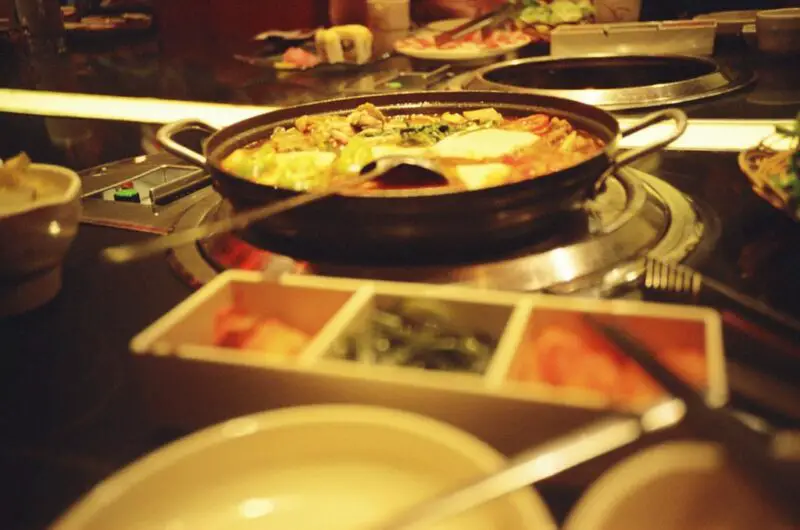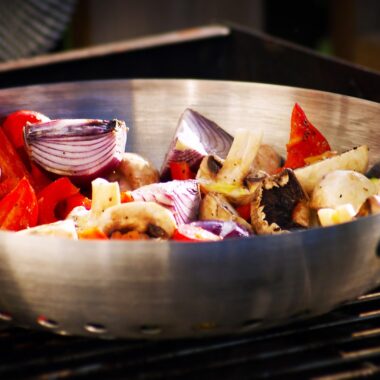In Korean cuisine, the term “hot pot” refers to a communal style of cooking and dining that brings people together around a simmering pot of broth filled with a variety of ingredients. Known as jeongol or nabe in Korean, this dish is a beloved tradition that embodies the spirit of shared meals, warmth, and camaraderie. Unlike the individual servings common in Western dining, Korean hot pot is a group experience, where diners cook and eat directly from a shared pot at the table. This article explores the origins, cultural significance, types, ingredients, preparation methods, and modern adaptations of Korean hot pot, offering a comprehensive look at this iconic dish.
Origins and Cultural Significance
Historical Roots
Korean hot pot, particularly jeongol, has its roots in Korean royal court cuisine and traditional home cooking. The term jeongol is derived from the Korean word jeon, meaning “pan,” and gol, referring to a “stew” or “hot pot.”
Historically, jeongol was a luxurious dish served to nobility, featuring high-quality ingredients like beef, seafood, or wild mushrooms, often arranged artfully in a wide, shallow pot. Over time, jeongol became more accessible to the masses, evolving into a versatile dish that could accommodate a range of ingredients based on availability and preference.
Hot pot-style dishes in Korea also draw influence from neighboring cuisines, particularly Chinese and Japanese hot pots, but they have developed a distinctly Korean character. The communal nature of the dish aligns with Korean cultural values of togetherness and jeong—a concept of deep emotional connection and community. Eating from a shared pot fosters a sense of unity, making hot pot a popular choice for family gatherings, celebrations, and casual meals with friends.
Cultural Role
In Korean culture, food is more than sustenance; it is a medium for connection. Hot pot embodies this philosophy by requiring diners to cook and eat together, engaging in conversation as they add ingredients to the pot and share the resulting meal. The act of cooking at the table—watching the broth bubble, adding fresh vegetables or meat, and ladling out portions—creates an interactive and intimate dining experience. Hot pot is particularly popular during colder months, as the steaming pot provides warmth and comfort, but it is enjoyed year-round in Korea.
Hot pot also reflects Korea’s emphasis on balance in meals. A typical Korean hot pot includes a variety of ingredients—proteins, vegetables, mushrooms, and sometimes noodles—ensuring a mix of flavors, textures, and nutrients. The broth, which can range from mild to fiery, ties the components together, creating a harmonious dish that appeals to diverse palates.
Types of Korean Hot Pot
Korean hot pot comes in many forms, each with its own unique ingredients, flavors, and preparation methods. Below are some of the most popular types of jeongol and related hot pot dishes in Korean cuisine:
- Haemul Jeongol (Seafood Hot Pot)
Haemul jeongol is a seafood lover’s delight, featuring an assortment of fresh ocean ingredients such as shrimp, clams, mussels, squid, and fish. The broth is typically a light, savory seafood stock, often infused with anchovies, kelp, or dried shrimp for depth. Vegetables like zucchini, mushrooms, onions, and green onions are added, along with tofu and sometimes glass noodles (dangmyeon). The dish is seasoned with soy sauce, garlic, and a touch of gochugaru (Korean red chili flakes) for a subtle kick. Haemul jeongol is prized for its fresh, briny flavors and vibrant presentation.
- Gopchang Jeongol (Beef Intestine Hot Pot)
For those who enjoy offal, gopchang jeongol is a hearty and flavorful option. This hot pot features beef intestines (gopchang), which are prized for their chewy texture and rich taste. The broth is often spicy, made with gochujang (Korean red chili paste) or gochugaru, and includes vegetables like cabbage, mushrooms, and potatoes. Gopchang jeongol is a bold, warming dish often enjoyed with soju, Korea’s traditional distilled spirit, and is popular in casual dining settings.
- Budae Jjigae (Army Stew)
Budae jjigae, or “army stew,” is a modern Korean hot pot with a unique history. It emerged after the Korean War, when food was scarce, and Koreans incorporated surplus American military rations—such as spam, hot dogs, and processed cheese—into their cooking. The result is a spicy, eclectic hot pot that combines these Western ingredients with traditional Korean ones like kimchi, tofu, mushrooms, and instant noodles. The broth is typically red and fiery, flavored with gochujang and gochugaru. Budae jjigae is a nostalgic dish that remains a favorite for its bold flavors and communal appeal.
- Kimchi Jeongol
Kimchi jeongol is a spicy, tangy hot pot centered around Korea’s iconic fermented cabbage, kimchi. The broth is made by simmering kimchi with pork, tofu, and vegetables like onions, scallions, and enoki mushrooms. The fermented kimchi adds a deep, umami-rich flavor, while gochujang or gochugaru provides heat. This hot pot is particularly popular in winter, as the spicy broth warms the body and soul. It’s often served with rice to balance the intensity of the flavors.
- Mandu Jeongol (Dumpling Hot Pot)
Mandu jeongol features Korean dumplings (mandu) as the star ingredient. The dumplings, filled with ingredients like pork, beef, tofu, or vegetables, are simmered in a savory broth with vegetables, mushrooms, and sometimes glass noodles. The broth can be mild or spicy, depending on the recipe, and is often seasoned with soy sauce, sesame oil, and garlic. This hot pot is a comforting, crowd-pleasing dish that appeals to all ages.
- Shabu-Shabu
While shabu-shabu is originally a Japanese dish, it has been fully embraced in Korea with a local twist. In Korean shabu-shabu, thinly sliced beef or pork is swished in a simmering broth (often kelp or beef-based) to cook quickly, then dipped in sauces like sesame or soy-based dipping sauce. The pot is filled with vegetables, mushrooms, and noodles, which absorb the broth’s flavor as they cook. Korean shabu-shabu is lighter than other jeongol varieties but equally satisfying, with an emphasis on fresh ingredients.
Key Ingredients in Korean Hot Pot
The beauty of Korean hot pot lies in its versatility, allowing for a wide range of ingredients depending on the type of jeongol or regional preferences. Below are the key components commonly found in Korean hot pot:
Broth
The broth is the foundation of any hot pot. Korean hot pot broths vary widely but are typically made from:
Anchovy and Kelp Stock: A light, umami-rich base used in seafood or vegetable hot pots.
Beef or Chicken Stock: A heartier base for meat-based jeongol.
Spicy Broth: Made with gochujang, gochugaru, or kimchi for a fiery kick.
Soy-Based Broth: Seasoned with soy sauce, garlic, and sesame oil for a savory, aromatic flavor.
Proteins
Meat: Thinly sliced beef, pork, or offal like intestines or tripe.
Seafood: Shrimp, clams, mussels, squid, crab, or fish.
Tofu: Firm or soft tofu, which absorbs the broth’s flavors.
Dumplings: Mandu filled with meat, vegetables, or a combination.
Vegetables
Mushrooms: Enoki, shiitake, oyster, or king oyster mushrooms add earthy flavors and varied textures.
Leafy Greens: Spinach, watercress, or chrysanthemum greens for freshness.
Root Vegetables: Potatoes, carrots, or daikon radish for heartiness.
Others: Zucchini, onions, scallions, and cabbage are common additions.
Noodles
Glass Noodles (Dangmyeon): Made from sweet potato starch, these chewy noodles are a hot pot staple.
Ramen or Udon: Added at the end of the meal to soak up the flavorful broth.
Seasonings and Condiments
Gochujang and Gochugaru: For spicy broths and bold flavor.
Soy Sauce and Sesame Oil: For savory, umami depth.
Garlic and Ginger: For aromatic complexity.
Dipping Sauces: Soy-based or sesame-based sauces for shabu-shabu or grilled meats.
Preparation and Cooking Methods
Preparation
Preparing a Korean hot pot begins with selecting fresh, high-quality ingredients. The broth is typically made in advance by simmering ingredients like anchovies, kelp, or beef bones for several hours to extract maximum flavor. Vegetables and proteins are washed, sliced, and arranged attractively in a wide, shallow pot designed for communal cooking. For spicy hot pots, seasonings like gochujang or gochugaru are mixed into the broth or added as a paste.
Cooking Process
Korean hot pot is cooked at the table, often on a portable gas or electric burner. The broth is brought to a simmer, and ingredients are added in stages based on cooking time. For example:
Hard Vegetables and Meat: Ingredients like potatoes, carrots, or beef are added first, as they take longer to cook.
Seafood and Tofu: These are added next, as they cook relatively quickly.
Leafy Greens and Noodles: Added toward the end to prevent overcooking.
Diners use chopsticks or ladles to retrieve cooked ingredients from the pot, often dipping them in sauces before eating. The broth is sipped throughout the meal, and noodles or rice may be added at the end to create a satisfying conclusion.
Serving and Etiquette
Korean hot pot is served family-style, with the pot placed in the center of the table. Diners share the pot, using communal utensils to add ingredients and serve portions. It’s customary to ensure everyone gets a fair share of ingredients, and hosts may take on the role of cooking and serving to ensure the meal progresses smoothly. Side dishes (banchan), such as kimchi, pickled radish, or seasoned vegetables, are served alongside the hot pot to complement the meal.
Modern Adaptations and Popularity
Global Appeal
Korean hot pot has gained international popularity thanks to the global rise of Korean culture, or Hallyu. Restaurants specializing in jeongol, budae jjigae, or shabu-shabu can be found in cities worldwide, from New York to Sydney. These establishments often cater to diverse audiences by offering customizable hot pots, allowing diners to choose their broth, proteins, and vegetables.
Fusion and Innovation
Modern Korean hot pot has seen creative adaptations, particularly in budae jjigae, which incorporates ingredients like macaroni, baked beans, or even mozzarella cheese. Some restaurants offer vegetarian or vegan hot pots, using plant-based broths and proteins like tofu or seitan. Instant noodle brands have also capitalized on the hot pot trend, creating pre-packaged budae jjigae or kimchi jeongol kits for home cooks.
At-Home Hot Pot
In Korea and beyond, hot pot is a popular dish for home cooking, especially with the availability of portable burners and pre-made broth bases. Families and friends gather around a hot pot to enjoy a customizable, interactive meal. Supermarkets sell hot pot kits with pre-sliced ingredients, making it easy to recreate restaurant-quality jeongol at home.
Health Benefits and Nutritional Value
Korean hot pot is not only delicious but also nutritious. The inclusion of vegetables, lean proteins, and tofu provides a balanced meal with fiber, protein, and essential vitamins. The broth, often made from scratch, is rich in minerals and umami flavors without relying on excessive oil or fat. Spicy hot pots, with ingredients like kimchi or gochujang, may offer additional health benefits, such as improved digestion and metabolism due to capsaicin and fermented foods.
For those watching their diet, hot pot can be tailored to be low-calorie or low-sodium by choosing lighter broths and limiting processed ingredients. However, some hot pots, like gopchang jeongol or budae jjigae, can be high in fat or sodium, so moderation is key.
Conclusion
Korean hot pot, whether it’s the elegant haemul jeongol, the fiery budae jjigae, or the comforting mandu jeongol, is a celebration of flavor, community, and tradition. Its versatility allows it to cater to a wide range of tastes and dietary preferences, while its communal nature fosters connection and shared enjoyment. From its historical roots in royal cuisine to its modern adaptations in global restaurants, Korean hot pot remains a beloved dish that warms both the body and the heart. Whether enjoyed at a bustling Korean restaurant or a cozy home gathering, hot pot is a testament to the enduring appeal of Korean culinary culture.


















